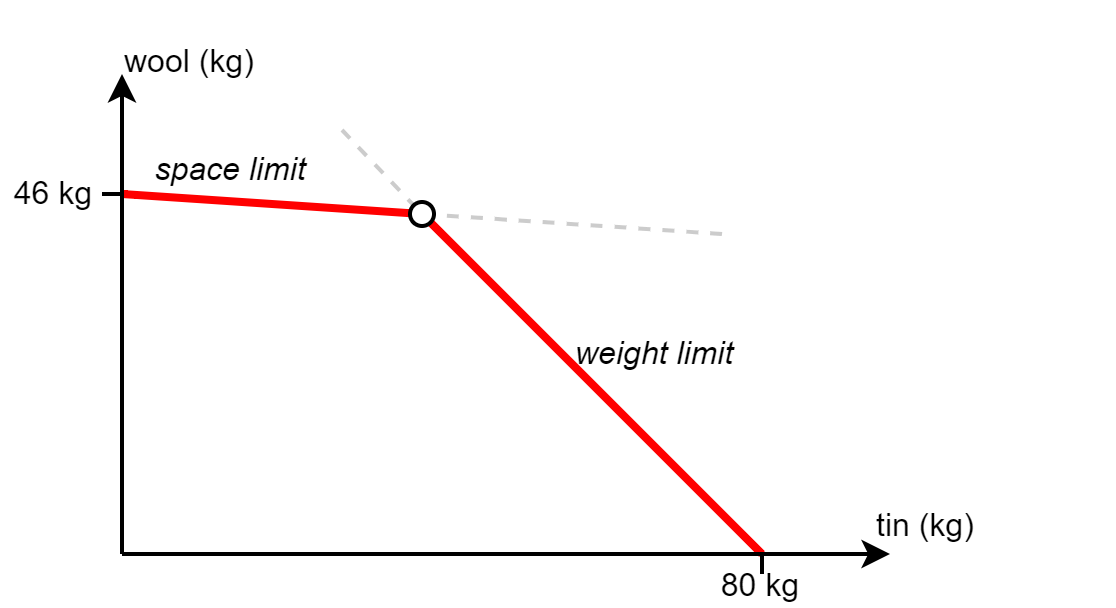Mapping the best of both worlds
Last week I mentioned the Assyrian traders who would carry cloth and tin from northern Mesopotamia to central Anatolia [1]. Tin is used to make bronze and its rarity makes it valuable enough to transport despite its weight. Cloth took an inordinate amount of labour to produce in the pre-industrial world and so was similarly valuable, but was bulky and took a large amount of space rather than just pure weight. How do we balance these two when setting out on our donkey?
When we have to make trade-offs, it can be helpful to visualise the trade-off with a Pareto Curve. The Pareto Curve can be tricky to understand and is easiest to explain with an example.
In the graph we can see two axes, the vertical wool axis shows how much wool we loaded onto our donkey and the horizontal tin axis shows how much tin. There are two constraints, we must stay below the weight limit (80 kg) and the space limit (200 L) which are shown in the red lines. Adding too much wool takes us over the space limit, while adding too much tin takes us over the weight limit. Of course, wool also weighs something (0.23 kg/L) and tin also takes up space (6 kg/L) so these lines aren’t perfectly horizontal or vertical. The red line is the Pareto Curve, it’s all the points where we cannot add anything more without also taking something else away.
The Pareto Curve is useful as it allows us to only think about combinations of wool and tin that are at the limit of what we can carry and ignore all other combinations. We can easily see that there’s a point where both the space and weight limits are maxed out, marked with a circle. Pareto curves could help us understand the trade-offs when allocating warehouse space, vehicles to different pools, or production quantities between different outputs. They don’t need to be limited to just two quantities either, if our traders suddenly want to add tea leaves to their caravans, it becomes more complex but we can still use such curves.
If you would like help in estimating the shape of your trade-offs, get in touch at Hello@NorthCarindal.com.au .
[1] Elizabeth Wayland Barber (1994). Women’s work: the first 20,000 years, p. 170

